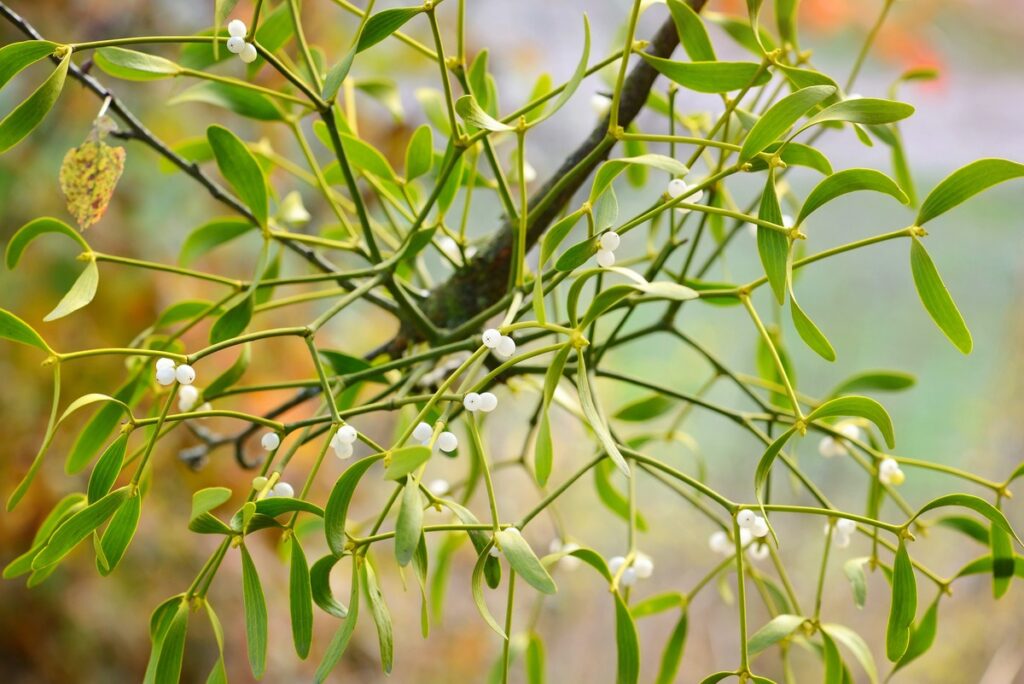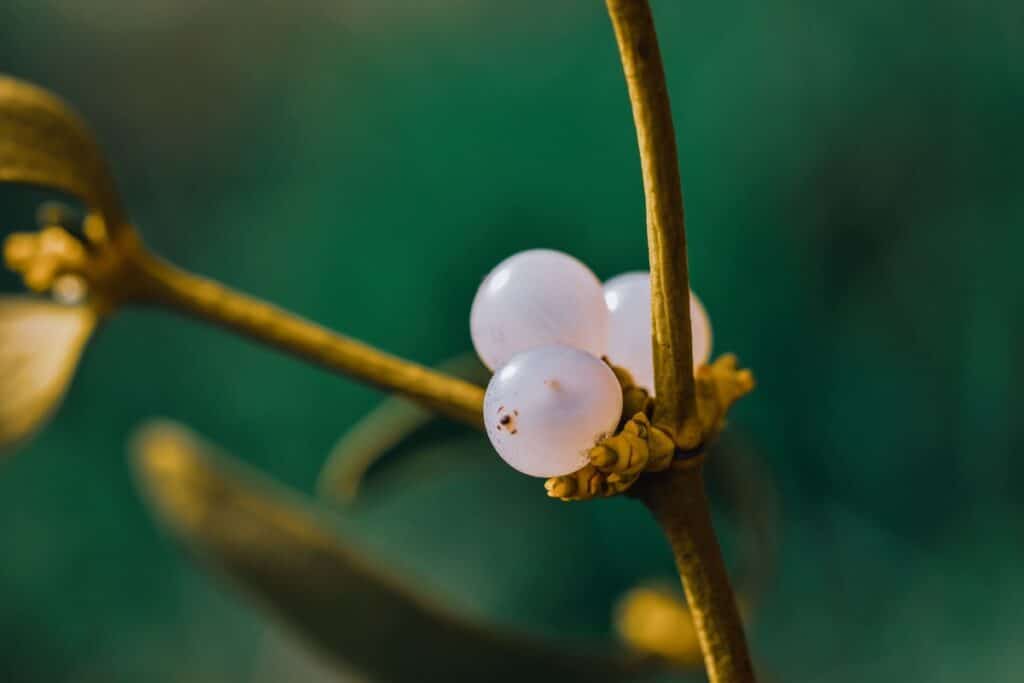
Regarding festive dates, there is a single plant that captivates all the attention: mistletoe. The history of this plant has dramatically impacted and has gone around the world, but some other aspects make it an even more important plant.
Mistletoe is the common name for more than 1300 different species. This parasitic evergreen plant is important in culture and nature.
In this article, we will talk deeper about mistletoe and its importance for wildlife and humans.
The 3 most popular varieties of mistletoe are:
Something that all the variations of mistletoe have in common is that all of them grow on branches of trees as parasites. Interestingly, the American variation (Phoradendron) in Greek means “Thief of the tree.”
Mistletoes are a group of parasitic plants on aboveground parts of woody trees and shrubs.
They are attached to their host tree or shrub by a structure called the haustorium, through which they extract water and nutrients from the host plant.

Mistletoe is more than just a Christmas attraction. It is a valuable part of our ecosystem, providing refuge for nesting birds and tree-dwelling mammals.
Mistletoe is a parasitic plant that takes water and nutrients from a host plant to give back to the environment. Some animals couldn’t even survive without it. Mistletoe berries are the main food source for some species and the net for other animals.

It is thought that the tradition of hanging mistletoe in houses comes from the ancient druids because they believed that doing so would bring good luck to them and help protect themselves from evil spirits.
Now it is a symbol of romance, and you will find it in so many houses around the world on Christmas.

The tradition of kissing under the mistletoe originates from Norse mythology in the 1700s among the servant class, and it has been firmly established in England & the United States.
If two lovers kiss each other under the mistletoe, they will wed and attract luck, especially on New Year’s Eve.
Before putting your own mistletoe this year, make sure it is full of berries because after a man kisses a girl on the cheek, he has to remove the berries until they all are gone.
Additionally, it is said that if a person refuses to kiss the other one under the mistletoe will stay single for the next year and will bring bad luck.
An interesting fact about mistletoe is that during Roman times, the war enemies reconciled their differences under the mistletoe, which was a symbol of peace for them.
Mistletoe contains toxic proteins called phototoxic and viscotoxin. It can cause drowsiness, blurred vision, diarrhea, vomiting, and other symptoms in some people. These side effects occur after drinking tea made with the leaves of these plants, but it is more common when you directly eat the berries.
It’s also poisonous to animals, so dog and cat owners should avoid it as a foraged decoration or at least keep it out of their pets’ reach.
Mistletoe can also be overwhelming because this is a parasitic threat, and sometimes you need to control it by removing the infested branches; so if you are having this problem, you need to know the differences between trimming vs pruning and hire tree experts to eliminate the infestation.

When discussing its curative effects, more studies still need to confirm it. However, many people attribute to mistletoe curative properties.
Mistletoe has medicinal benefits; many people have used it for centuries to treat different medical conditions.
Some of Them Are:
When it comes to using mistletoe as a treatment, Cancer is the most talked about, but why?
Mistletoe has been used (Mostly in Europe) as part of integrative cancer care to improve cancer patients’ quality of life by increasing chemotherapy’s tolerability.
Mistletoe possesses many compounds with potential therapeutic uses, including lectins, viscotoxins, flavonoids, polysaccharides, membrane lipids & more.

As you can see, this plant plays a vital role worldwide and even for humans, as it can treat many diseases.
Mistletoe is a parasitic plant that takes water and nutrients from a host plant to give back to the environment. However, if you plan to have that parasitic plant at home, don’t do it without consulting with a specialist in tree services.
Also, remember that this is a parasitic plant, so if your trees are infested with mistletoe, don’t hesitate to hire our tree care professionals.
Joe Marra Tree Service provides tree services in Oak Ridge, Oakland, Wayne, West Milford, Pompton Lakes, and Ringwood, NJ. Call us if you need our help!
I hope you loved our article, and if you found it helpful, share this piece of content on your social media. Stay tuned, take care, and till next time!